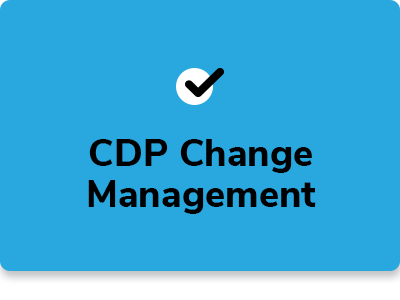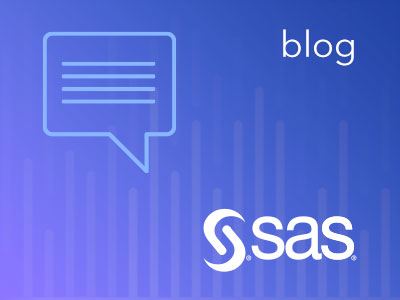Customer Data Platforms vs. Data Management Platforms: A Definitive Guide
March 19, 2020Modern brands share a relationship with their customers vastly different from the ones that traditional organizations did. If one were to outline each interaction (both physical and digital) between a brand and its customers, we’d find an extensive map with multiple touch points. With these numerous contact points comes the dilemma of delivering a seamless transition between different channels and a consistent, unified messaging throughout. Though brands have been relying on Data Management Platforms (DMPs) for achieving this goal, the emergence of Customer Data Platforms (CDPs) has presented a compelling alternative to marketers. By the looks of it, the two may seem similar but they hold major differences. However, one cannot necessarily replace the other.
This guide will help you understand each of these platforms and the value they deliver.
What are Customer Data Platforms?
The CDP market is growing rapidly. According to a study conducted by the CDP Institute, the CDP market size grew by more than 50% during the year 2018 alone, to a net worth of around $740 million. And the growth is not merely limited to numbers. A study conducted by Forbes Insights involving 400 marketing leaders found out that 44% of them believed in the power of CDPs in driving customer loyalty. So, what exactly are Customer Data Platforms?
Say, you have been given a 500-piece puzzle which you easily solve. To your surprise, you’re told that it is simply part of a bigger puzzle and you’re given 200 pieces more as a result. You carefully finish that as well though it is relatively time-consuming. But, before you could take a deep sigh of relief, you’re asked to expand the puzzle further with 500 more pieces!
Well, let’s see how a Customer Data Platform (CDP) fits into this puzzle analogy. Consider each piece of the puzzle to be a data point about an individual customer and your “understanding” of this person keeps expanding in varying degrees (with every new puzzle piece). Now, the final puzzle will represent the unified profile for that customer and the board/area on which you’re building the puzzle will depict the CDP database.
In technical terms, a Customer Data Platform or CDP is a marketing system or software that creates a unified and steady customer database accessible to other systems. The purpose of a CDP is to gather all customer data and to stitch them in order to create unified customer profiles that can be used for marketing campaigns and customer service initiatives.
What are Data Management Platforms?
The Data Management Platform (DMP) market size is expected to have a net worth of whopping $3 billion by the year 2023 with a Compound Annual Growth Rate (CAGR) of 15% between the years 2017-2023. Let’s take a slightly different approach to understand the platform with such impressive prospects. Consider the example of a dealer or merchant whose employees wear blindfolds and earplugs full-time. As a result, they are unable to see or hear their customers. All they do throughout the day is punctually stock the shelves with products and take care of the register. There’s no contact whatsoever with the customers. In fact, they don’t even know who they are! Hence, naturally they are clueless regarding their customers’ preferences and likes/dislikes. And after a “good” day’s work, when they sit down to tally the register, all they can figure out is the number of goods sold and at what cost. They have no clue of who bought what and why (was it for self-use or maybe as a gift?). And the worst part is not oblivion but indifference – the dealer doesn’t know and he couldn’t care less. This is exactly what a marketer or business professional that does not use a Data Management Platform (DMP) looks like.
A DMP is more or less like a data warehouse – it is a system or software that gathers, analyzes, stores, and delivers useful customer information to marketers, web publishers, and businesses. The data managed by DMPs is used to generate audience segments which are in turn used to target specific users in online marketing campaigns.
Aren’t they the same?
Well, they do sound the same and a superficial understanding can even give one the impression that they indeed are the same but nothing could be further from the truth. CDPs and DMPs differ on several grounds:
- Personally identifiable Information (PII)
Perhaps, the greatest difference between CDPs and DMPs can be established in terms of their use of customer identities or Personally Identifiable Information (PII). In marketing terms, a PII is a combination of data points used to identify a specific customer. Since CDPs function in a manner that the more data you collect about a specific customer, the more relevant experience you can provide to them; it relies on PII to operate. Whereas, DMPs process data that is anonymous and this makes it more difficult to determine whether or not the data was sourced ethically.
- Data Sources
Another drastic difference between the two platforms can be found in terms of the data used by each. CDPs primarily use first-party data (data collected by your company) and a little of second-party data (first-party data collected and sold to you by a non-competitive partner company). DMPs, on the other hand primarily make use of third-party data (first-party data collected by a data collection company and made available for purchase) and a little of second-party data as well.
- Use Cases
CDPs and DMPs also differ in terms of their use cases. Where, on one hand, Customer Data Platforms are used in gathering customer data in its organic form, powering different marketing systems, cross-device data coordination, and leveraging Artificial Intelligence (AI) for channel marketing. The use cases for DMPs include optimizing acquisition, prospecting and modelling, audience suppression, cross-channel segmentation, and remarketing.
- Data Retention
Another important difference between the two platforms lies in how long each stores customer data. CDPs store customer data for long time periods. Smart CDPs even allow you to set the time limit for which the data must be retained. This is especially useful in cases where, say, a furniture dealer wants to give a discount of 20%to his most valuable customers (CDP database for the previous year can help determine the high-value customers). DMPs are completely the opposite. They function best when data is retained for shorter periods (like 90 days). This is especially useful in cases where an advertiser is seeking to target travel aficionados (there’s no point in targeting people who were interested in travelling five years ago but aren’t right now).
- Scope of Reach
Since CDPs mainly have access to the data of your existing customer base, they cannot help you to create lookalike audience segments to target potential customers in external databases. DMPs, on the other hand, can help you in extending your target group by creating lookalike audience segments.
Do they have anything in Common?
Well, yes! Now that we’ve looked into the differences between CDPs and DMPs, let’s take a look at the several similarities:
- Both CDPs and DMPs function by leveraging existing customer data.
- Creation of a Single Customer View (SCV) or a 360-degree view of the customer is the aim of both CDPs and DMPs. By creating a single view of the customer, the platforms aim at helping businesses understand their customers better.
- The data gathered via both platforms is used for Audience Activation. Meaning, the data is used for powerfully engaging with high-value audience segments and for delivering personalized and relevant user experiences.
- Both platforms render the following functionalities – reporting, analysis, and optimization.
CDP or DMP: Which one should you choose?
Since CDPs help in engaging and improving relations with existing customers, marketing departments of individual companies will find them the most profitable to manage customer data and to generate personalized messages via different marketing channels.
DMPs are your best bet if you need to manage and process large sets of audience data and wish to extend your target group to external databases. DMPs prove to be the most profitable to web publishers, marketing agencies, media houses, etc.
Furthermore, as mentioned earlier, CDPs and DMPs do not necessarily replace one another but are complementary in nature. Meaning, data collected by CDPs can be enriched for better segmentation using DMPs and CDP data can help in creating better lookalike audience segments when used within DMPs. Hence, depending upon your marketing needs, choose either one or both of these valuable platforms.


